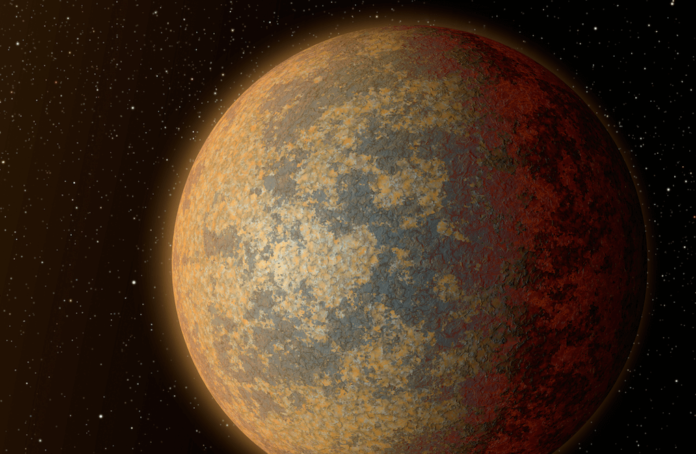WASP-19b is an exoplanet discovered in 2009 that’s recently come into the limelight again as a team astronomers take a much closer look at its atmosphere than ever before. With a mass around the same size as Jupiter and an estimated temperature of about 2000 degrees Celsius this exoplanet is so close to its parent star that it manages to complete an orbit in less than one day (around 19 hours to be more precise).
The researchers used the Very Large Telescope‘s FORS2 instrument in which to carefully analyze the light that passed through the planet’s atmosphere. From these observations, they were able to deduce that there were tiny amounts of water, titanium oxide, and sodium among the global haze. One of the researchers working on the project, Elyar Sedaghati, said, “Detecting such molecules is, however, no simple feat. Not only do we need data of exceptional quality, but we also need to perform a sophisticated analysis.
We used an algorithm that explores many millions of spectra spanning a wide range of chemical compositions, temperatures, and cloud or haze properties in order to draw our conclusions.”
Titanium oxide is not normally seen on Earth but is known to inhabit the deep pockets of cool stars. Hot planets like WASP-19b act as heat absorbers and if enough of them, these molecules will stop heat from getting in or put through the planet’s atmosphere. “The presence of titanium oxide in the atmosphere of WASP-19b can have substantial effects on the atmospheric temperature structure and circulation,” confirmed Ryan MacDonald, one of the team and astronomer at Cambridge University, United Kingdom.
Observations of WASP-19b were gathered over more than one year. After measuring the planet’s radius at various wavelengths of light that came through the exoplanet’s atmosphere and comparing them to atmospheric models the astronomers were able to reveal different properties, including the chemical content of WASP-19b. Being able to better observe exoplanets will enable astronomers to see which may be habitable in the future.
More News to Read
- Physicists Create Theory on Self-Interacting Dark Matter
- Swelling Galaxies Could be Down to Active Star Formations
- Researchers Get One Step Closer to Building a Global Quantum Internet
- Researchers Develop an Artificial Skin That Can Help Robots Sense Temperature
- Physicists Propose New Method for Stabilizing Fusion Reactors

